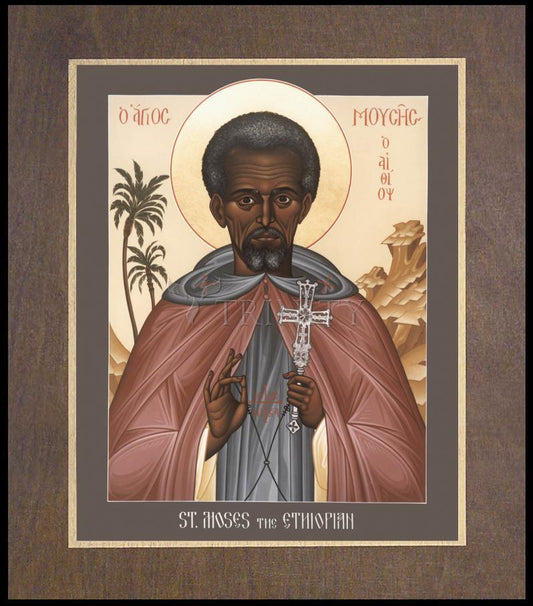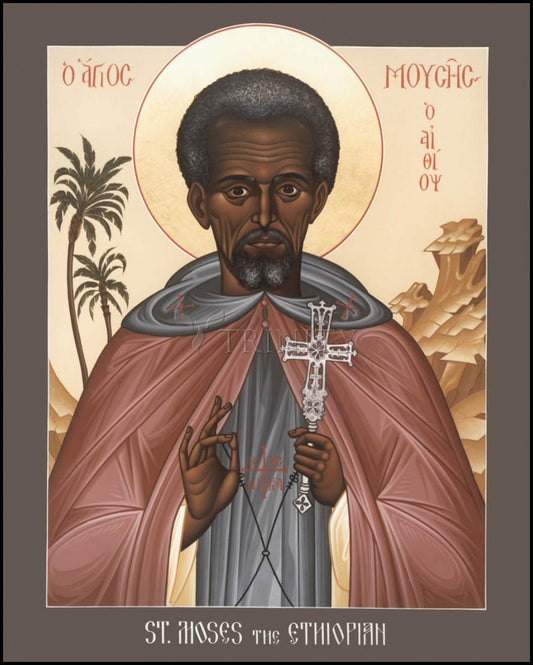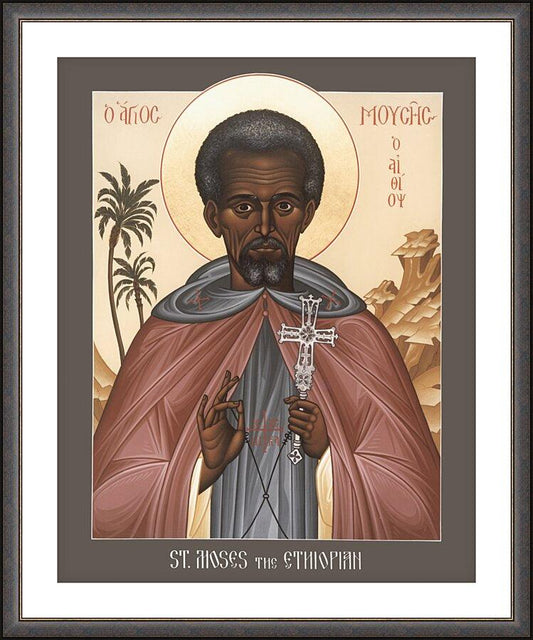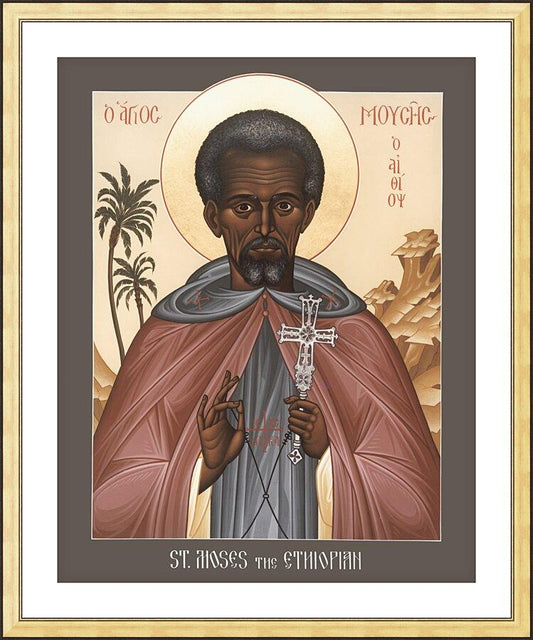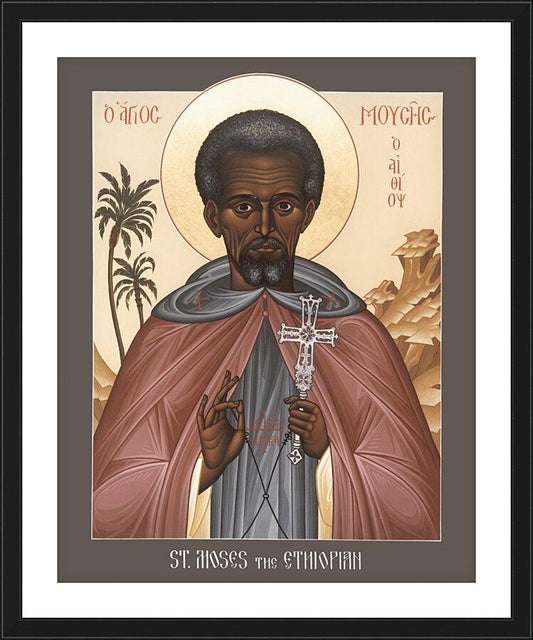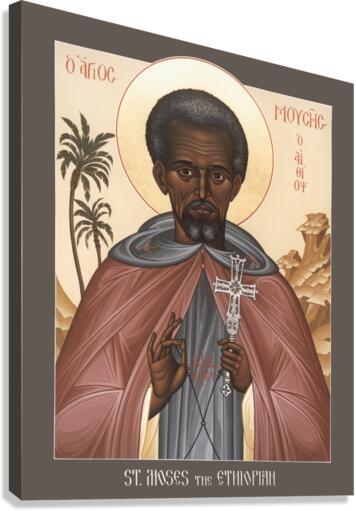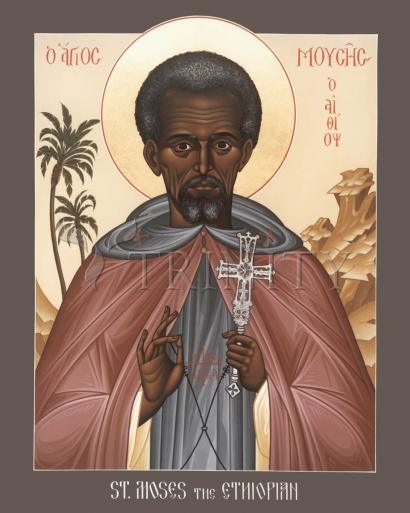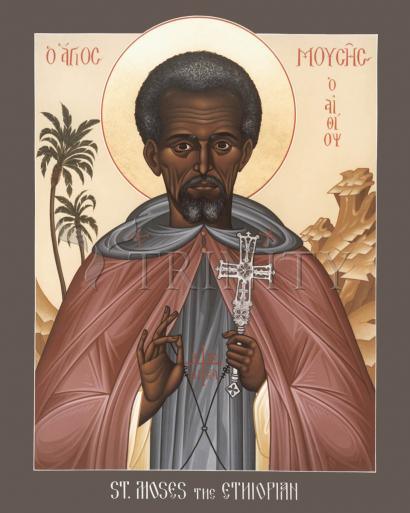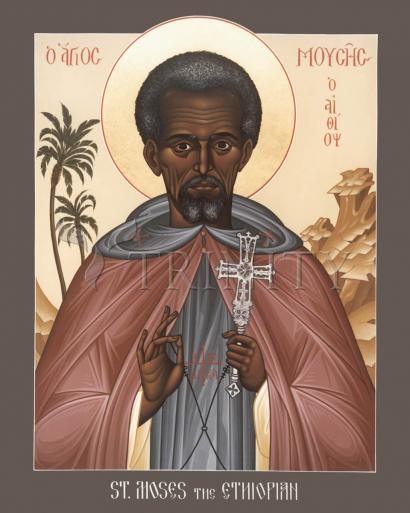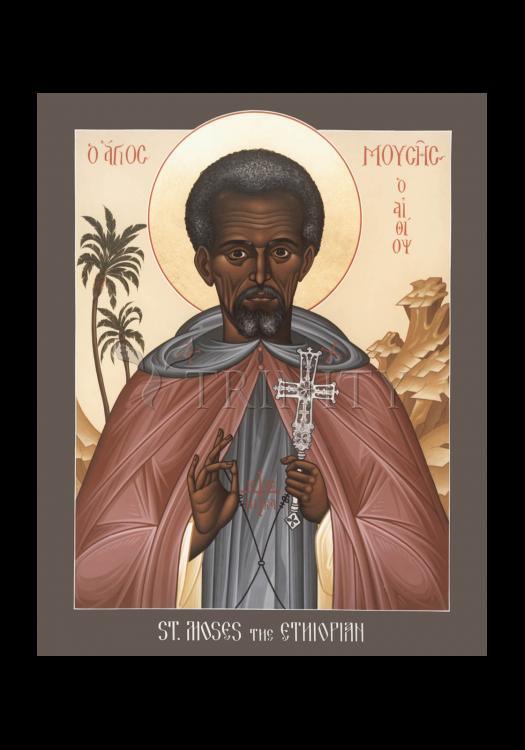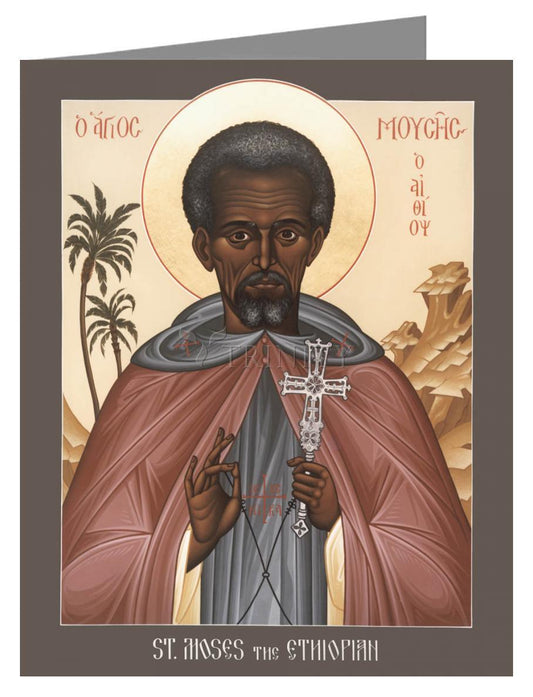One of the more exciting of the early monks in the period of desert Christian monasticism was a Black African (Nubian) now honored as St. Moses the Black. The Lausiac History of Palladius is the main historical source for his life. There is also an account found in the "Bibliotheca Sanctorum" by J. W. Sauget, and approximately 49 apophthegmata found in "The Desert Christian" by Sr. Benedicta Ward. The life of Moses is well documented.
He had been a slave of a government official in Egypt who discharged him for theft and suspected murder. He became the leader of a gang of bandits who roamed the Nile Valley and had the reputation for being associated with terror and violence.
Moses was a large and imposing figure; he became rather notorious for his escapades. On one occasion, a barking sheep dog prevented Moses from executing a planned robbery, so he swore vengeance on the owner. Carrying out his threat, he approached the hut of his victim from the opposite side of the Nile and, placing his weapons between his teeth, swam the river. The owner of the dog heard the approach, so he hid along the river bank, thus escaping disaster, Moses, not finding the shepherd, took four rams from the flock, towed them back across the river, flayed them, sold the skins for wine, cooked the best parts, and feasted before walking back 50 miles to his camp.
On one occasion, when he sought to hide from local authorities, he took shelter with some monks in a monastic colony in Skete in the western desert near Alexandria. The dedication of their lives and their peace and contentment seem to have influenced him deeply. Eventually, he gave up his old way of life and became a monk himself.
The conversion of Moses was not instantaneous, he had a rather difficult time adjusting to regular monastic discipline. His flair for adventure remained with him. Once, while living in a small cell, he was attacked by four robbers. Much to their surprise, Moses fought and overpowered them, tied them together and dragged them to the chapel where the other monks were praying. He dumped the crew in front of the other monks and exclaimed that he did not think it "Christian" to hurt the intruders. He asked what he should do with them. According to tradition, the overwhelmed robbers repented, were converted, and themselves became monks under the influence of Moses.
He was zealous of everything he undertook, but became discouraged when he concluded he was not becoming a perfect monk advanced in all the degrees of spiritual perfection. Early one morning before dawn, St. Isadore, abbot of the monastery, took Brother Moses to the roof and together they watched the first rays of the dawn come over the horizon. They stayed there until the new day had begun. Then Isidore said, "Only slowly do the rays of the sun drive away the night and usher in a new day and, thus, only slowly does one become a perfect contemplative."
The humble Moses also proved to be effective as a prophetic spiritual leader. One day the abbot ordered everyone to fast during a particular week. During that time, some brothers came to visit Moses, and he cooked a meal for them. Seeing the smoke, the neighboring monks told the abbot that Moses had broken the command. But knowing his remarkable way of life, these same monks, when they came to confront Moses, observed, "You did not keep the commandment of men, but it was so that you might keep the commandment of God." Some see in this account, by the way, one of the earliest allusions to the Paschal fast which developed in the fourth century and later became the Lenten fast.
In another incident related in the sources, one of the brothers committed a fault. A council met and Moses was invited, but refused to attend. Someone came to him to let him know the others were waiting, at which Moses went to the meeting. He took a leaking jug filled with water and carried it on his shoulder (another version has him carrying a basket of sand with a hole in it). When he arrived, the others came out to meet him asking, "What is this?" Moses replied, "My sins run out behind me and I do not see them, but today I am coming to judge the errors of another." Hearing that, they said no more to the erring brother, but forgave him.
A favorite incident of many is the story of the hospitality of a certain Arsenius toward a visiting monk. Arsenius received the monk in absolute silence. Moses, however, greeted the visitor with joy. When someone asked for an explanation, the answer was in the form of two visions. One has Arsenius in a boat with Angels in silence, another saw Moses in the boat with the Angels eating sweetmeats.
Moses became the spiritual leader of a colony of hermits in the desert near Skete. At some time, he had been ordained a priest -- an uncommon phenomenon at that period for desert monks. When he was 75 years old, about the year 407, word came that a group of renegades planned to attack the colony. The brothers wished to defend themselves, but Moses forbade such action. He told them to retreat rather than take up the sword. He and six others stayed on to greet the invaders with open arms, but all were martyred by the bandits. A modern interpretation honors St. Moses the Black as an apostle of nonviolence.
Born: 330; Ethiopian ancestry
Died: Murdered 405 by Berbers at Petra, Skete, Egypt; relics at the Church of Al Adra (the Virgin)
Also known as: Moses the Black



